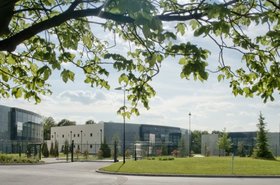‘Green IT’ and ‘green data centers’ are back at the top of the news headlines. Yet they are amongst a group of sustainability terms that have been overused across the last decade or so. So much so that their impact has risked being watered down, perhaps even clichéd.
However, the imperative to be responsible digital citizens is not a cliché or a marketing stunt. It is a stark reality at which the entire data center sector needs to make meaningful improvements.
After the realignment of efforts promoted by a global pandemic, attentions are drifting back to sustainability. So now that focus has returned, how are we as an industry able to make our efforts more impactful?
Responsible digital citizenship in the data center industry
It is estimated that one percent of global electricity is used by data centers; in the EU27 this consumption is projected to increase from 40 to 43 TWh per year between 2020 and 2025.
An estimated 74 million tonnes of e-waste is expected to be created by 2030, and the number of connected devices is set to be nearly 56 billion by 2025, so it is self-evident that the data center industry has a critical role to play in ensuring the sustainability of the digital economy.
These numbers are so vast that it seems difficult for any single organisation to make an impact. However, every individual and company must make a positive impact – and hold themselves to account in how it is done. This means more than just a focus on PUE. Throughout its life the footprint of the data center spans far beyond power consumption.
A lifecycle commitment
Rather than being PUE-centric, today’s sustainability best practice necessitates focusing on a multitude of components, energy requirements and materials.
Think of the raw materials and transformed materials used in the construction of buildings, computer and telecommunications equipment, electrical equipment, cooling systems, energy generators and so on. The water requirements in cooling, alongside the sanitizing chemicals. And then we must look at the equipment that populates the facilities, and its life cycle.
Successful commitments to sustainable digital citizenship will need to be codified in a corporate strategy. But they will come to life and create impact only with the engagement of the company's stakeholders – its employees, customers, investors and suppliers – and across the lifecycle of the data center. Here we’ve simplified this complex journey into three accessible stages:
- Evaluation and targeting
Start by recognizing the positive guiding impact of PUE targets, but additionally looking at the range of impact areas imposed by the data center – the totality of your energy mix, the accumulated footprint of the construction and delivery of the facility itself, the use of and impact on water resources and wider recycling best practices.
Understanding your environmental footprint will involve benchmarking across these, and monitoring progress. Whilst not an exhaustive list, some key metrics against which you’re held to account might include:
- Power Usage Effectiveness (PUE)
- Water Usage Effectiveness (WUE)
- Carbon Usage Effectiveness (CUE)
- Waste recycling rate
In terms of targeting, you can set goals against each of these. But many organizations may also want a ‘flagship’ environmental goal – one that serves to galvanize the efforts of employees, and to deliver reputational benefits for the business.
An increasingly powerful commitment being made by enterprises across the globe is to achieve “net zero carbon” (at Data4 we have set our goal as 2030 at the latest).
By nature of the energy-intensive processes and equipment found within the data center, this is not an easy goal for our industry. It therefore provides an important example of the complexity behind sustainability targets – and how making them ambitious but attainable is key for the reputation of the sector.
True carbon neutrality will of course see efforts and investments focused on reducing energy consumption. This means optimizing the efficiency of the construction process, the operation of the infrastructure and good environmental behaviours for end-of-life equipment.
So, for example, you will have to consider the carbon footprint of the concrete within the facilities as much as the technologies deployed to support the facility, such as generators, batteries and inverters.
Any successful target setting can only be done within the context of full lifecycle management of your facility.
2. Lifecycle and stakeholder management
True sustainability in our industry relies on the circular economy concept, seeing the data center’s environmental footprint from inception through to end of life, along with all the components within it.
It embraces a mindset of extending usable life of equipment (rather than immediate replacement) and of conscientiously recycling the materials used wherever possible. And it exists across the key four stages of the data center lifecycle:
- Design
- Manufacturing
- Operation
- End of life/Destruction and recycling
We understand that the lifecycle of any data center is not defined by its designer, builder or operator alone. It’s all of these participants, along with anyone holding a stake in the facility. It is also the narrative with the SLAs agreed with customers and the obligations placed on suppliers.
In support of this, some of the key behaviors and commitments we’ve identified at Data4, which help maintain close alignment to our overall sustainability goals, include:
Customer advocacy: Supporting customers in understanding their own environmental impact by allowing them to have a complete view of all the computer equipment and its infrastructure.
In particular, providing them with data relating to the carbon footprint of infrastructures. A big step forward in this relationship was providing them with the ability to calculate their total environmental footprint, including their IT production environment.
Employee ownership: Empowerment of employees to make good decisions starts with clarity of purpose and the provision of good insights. It’s about helping make clear the environmental issues in each of their actions and decisions.
This may require a combination of training, amendments to existing best practise, and more vocal participant in sustainability initiatives by leadership.
Industry partnership: “No data center is an island.” By forming partnerships with other participants in your ecosystem, you can create a multiplier effect allowing everything to share data and strategy, and to reinforce positive behaviours in a way that also becomes commercially advantageous.
There will be many actions that can be taken to improve the environmental footprint today and make a more positive contribution to the circular economy. However the above activities are an excellent point to begin exploring a full range of more sustainable innovations.
3. Innovation
At Data4, our environmental commitments have only been possible because of our curiosity. We are always asking “what new innovations can we adopt?” Fortunately in the field of sustainability, the answer is “a lot.” And these benefits can be seen throughout the lifecycle of the data center.
We have discussed the importance of including the impact of the design and build within any target to become carbon neutral. So in our own facilities we are willing to capitalize on the benefits of low carbon concrete and carbon capture capabilities. Then there is the evolution in battery technologies which allows for a more environmentally friendly way to plan for tiered redundancy.
In the operation of a facility as complex as a data center, we all need a helping hand to maximize our positive environmental behaviors. We have recently conducted a number of proofs of concept for artificial intelligence solutions aimed at collecting, analyzing and delivering insights on our cooling systems.
This information makes it possible to detect abnormal operations to prevent a breakdown (predictive maintenance) or to review the operating parameters to improve performance while reducing energy consumption. Alongside methodologies such as free cooling, this can profoundly shift your carbon footprint in the right direction.
Every organization will need to determine its own path forward. The mix of stakeholders, geographies and technologies mean no two businesses are the same. However, we believe that by being comprehensive in your evaluation and realistic in your target setting, you can bring your stakeholders together to deliver a more sustainable data center – throughout its lifecycle and hand in hand with our whole ecosystem.
More from Data4
-

Sponsored The five big trends powering tomorrow’s data center
Data4’s Olivier de Nomazy examines the driving forces that will shape the future of the data center
-

Data4 breaks ground on 50MW Warsaw campus in Poland
Company planning three buildings, first due online in Q1 2023
-

Data4 to expand into Poland, invest up to $237 million in new campus
French data center firm reportedly planning 50MW campus using money raised in April

